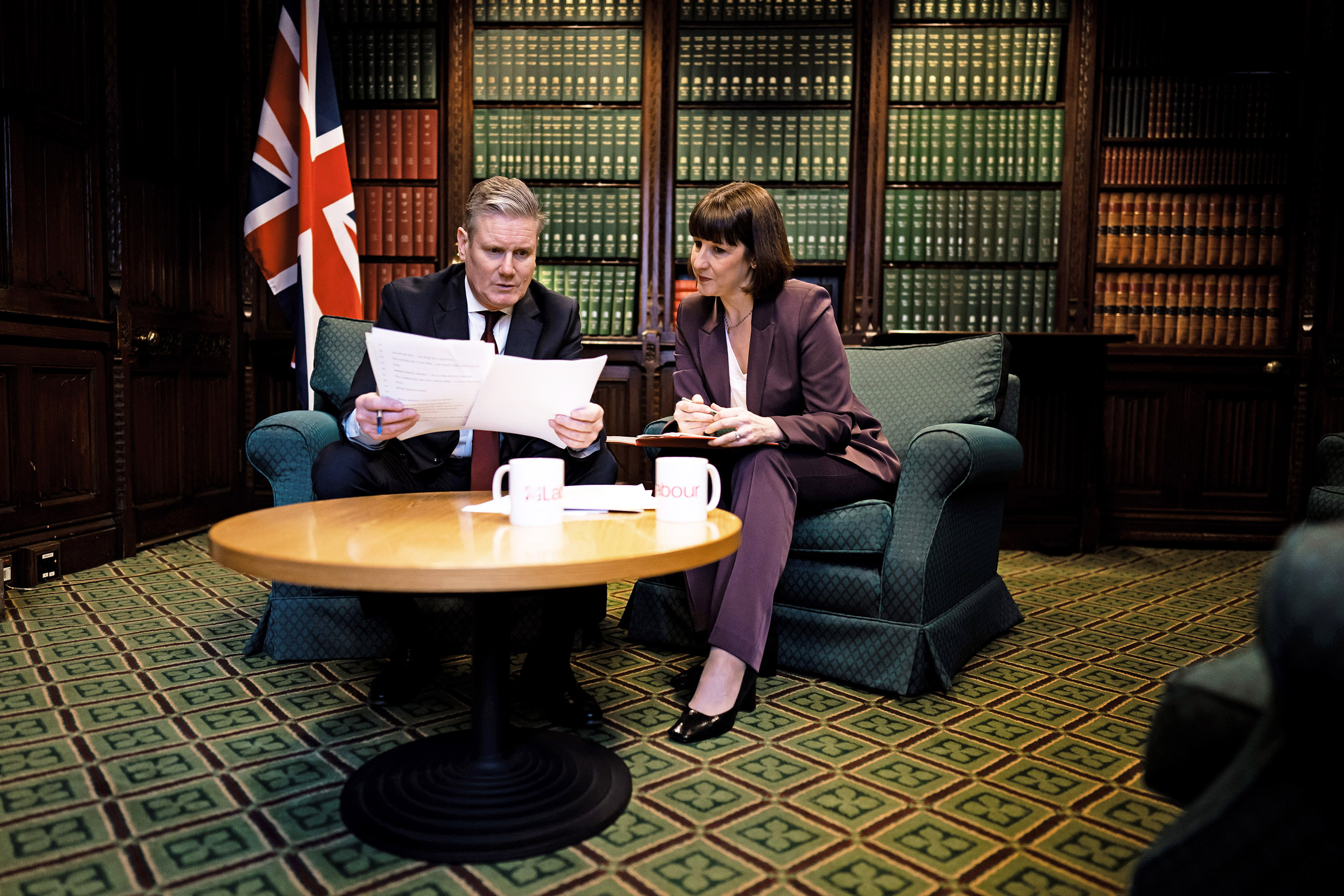From Sam and Lawrence Freedman’s excellent London-based Substack newsletter, Comment is Freed, comes this insider’s account — with Australian resonances — of the ubiquitous quest for “efficiencies.”
Many readers of Comment is Freed, most of whom are British, will have had some kind of National Health Service experience — whether a cancelled surgery due to one staff member being unavailable, or an appointment letter arriving after the appointment — that has left them shaking their head. Indeed my interest in NHS productivity started while lying in hospital for a month watching a procession of hardworking staff get bogged down by highly inefficient systems.
So why am I so quick to dismiss savings as a source of cash for Britain’s new Labour government? The answer starts with an explanation of why I, and most people in Whitehall, eyeroll when the word “efficiency” is spoken by a minister, and what I mean by the “efficiency paradox.” Then I’ll set out what would actually need to happen to enable real savings.
And this is really important. I don’t think that the government will have any choice but to substantially increase taxes (unless they want to make decisions about stopping services or benefits altogether that would make the row about winter fuel allowances seem like a pleasant chat). But pressures on spending aren’t going away, given the costs associated with an aging population, climate change, new healthcare treatments and a more dangerous world. Unless Britain’s long-run growth substantially improves we will need to keep increasing the tax take and make services a lot more efficient to survive.
For as long as I’ve been around Whitehall, spending has been tight. (I was offered my first think-tank job on the day two Bear Stearns hedge funds collapsed in July 2007, so I sadly missed out on the years of plenty.)
When I arrived at the Department for Education in 2010 there was still a reasonable amount of fat in the budget. The savings exercise demanded by the incoming Conservative chancellor, George Osborne, in the weeks following the election was not arduous. That year’s spending review was more painful but still manageable. The next request for “in-year” savings was doable too, as was the next spending review. But the pressure has never let up.
By the time the Conservatives were governing alone, after 2015, departments had used up all their easy savings and were starting to really struggle with these exercises. Part of the problem was the lack of certainly over budgets, which got significantly worse after 2019. The spending review of that year had to be ripped up almost immediately because of Covid. And the next attempt at a three-year review, in 2021, was quickly followed by rapid surges in inflation following the start of the Ukraine war. The Truss fiasco led to another wave of uncertainty and cutbacks.
Coping has required almost constant re-budgeting at department level both in response to requests to identify savings and because the Treasury has demanded that new costs, such as higher pay packets for public sector workers, be funded from existing budgets that were set in very different economic conditions.
These savings are always described in official documents as “efficiencies” but everyone knows that efficiency has nothing to do with it. They are emergency cuts that often have to be found in weeks or even days. They usually involve some mix of underspending due to delays in implementation (particularly for building projects); small cuts to programs that just get incrementally worse as a result; greater restrictions on any spending that seems discretionary (like advertising); hiring freezes combined with voluntary redundancy packages.
All of which contribute to future problems. The use of capital underspending as an “efficiency” is one reason our infrastructure is in such a mess, causing many policy challenges from the lack of prisons to collapsing school roofs. Restrictions on spending are often arbitrary and poorly thought through, creating enormous frustrations and delays for civil servants while they try to get permission to do things that are in fact necessary. The refusal of the Cabinet Office to allow the Department for Education to run TV adverts for teacher recruitment undoubtedly contributed to falling applications when I was there.
The hiring freezes combined with voluntary redundancies are the most destructive of all, as a load of good people leave and it’s impossible to replace them.
Of course, once these annual exercises become predictable the cannier senior officials learn to fudge their initial budgets so they can squirrel away a little extra to hand back when the time comes. The enthusiastic newbies get burned, and so learn to game the system too. These perversities are not discouraged so the whole budgeting process gets undermined, and Treasurys get more annoyed and more determined to get the money back.
This doesn’t just happen in departments but across any part of the public sector over which central government has control. One weary observer explained how this process plays out for NHS Trusts:
A fictional “breakeven” plan will be developed at the start of a financial year. When reality refuses to play along, a “recovery plan” is developed, perhaps with the help of expensive management consultants. This is supported by an “ambitious efficiency programme” with wildly optimistic savings… [A]fter a while, people stop listening.
They know that at the start of every year a “balanced” plan will be agreed; that part way through the year there will be a crisis when spending goes off track; and that towards the end of the year some money will be found to make it good. A rational response to this is to treat it all as noise. So senior managers find not only that they are spending their time managing fictions rather than reality, but that no one takes their exhortations to save money very seriously anymore.
Thus the paradox: in government “efficiencies” nearly always end up costing money and increasing inefficiency.
These kinds of resource allocation problems exist to some extent in all organisations with more than a few employees. But it’s worse in government for three reasons. First, it’s much bigger and more complex than even the largest multinational. Secondly, pay restrictions mean it’s harder to get good operational staff. Thirdly, and most importantly, incentives aren’t aligned: short-term political objectives rarely fit well with good management.
That doesn’t make it impossible though. It’s not as if public sector workers enjoy these inefficiencies, which make their lives harder and more frustrating. But doing it would require a very different approach. Here are three things that could unlock real savings.
Infrastructure: Lord Darzi’s recent review of the NHS confirmed a point made previously by me and many others — it has been starved of infrastructure funding even while staffing costs have shot up. Health minister Wes Streeting compared it to British Airways hiring a load of extra pilots but not buying any more planes. Not only have we spent £37 billion less since 2010 than peer countries but “Some £4.3 billion was raided from capital budgets between 2014–15 and 2018–19 to cover in-year deficits that were themselves caused by unrealistically low spending settlements.”
The government has responded by proposing three big shifts from “hospital to community, from analogue to digital, and from sickness to prevention.” Long-time NHS watchers will know that this has been the strategy for the last several decades and indeed Darzi notes that, in practice, “the NHS has implemented the inverse of its stated strategy.”
It’s good this has been acknowledged but it’s hard to see what will stop it happening again. My major worry is that there will be an ongoing lack of infrastructure investment in hospitals justified by the prospect of improving prevention and community care and thus requiring them less. This has been the logic of previous strategies and it has not turned out to be right. It seems like a contradiction but there’s no way of being able to shift resources away from hospitals until you give them the space to manage patient flow in a way that doesn’t lead to semi-permanent crises.
The same logic applies to numerous other policy areas. It might be nice to imagine we won’t need to build more prisons because of better approaches to rehabilitation, but experience tells us that even if that strategy is pursued countervailing factors will mean we need more prisons. (And that, in any case, rehabilitation isn’t even possible in many of the rotting prisons we have.)
Numerous savings can be secured from technology investment, which we’re now starting to see in the NHS in a number of trusts. We’re not talking whizzy AI hype here, just having live data records so that, to take one example, waiting lists aren’t full of dead people (or in a more alarming example I heard recently, patients aren’t allocated to dead doctors).
Treasury is, not unreasonably, sceptical of many “spend to save” proposals. But in this instance not only is the case watertight but the budgets can be kept separate. Having a proper infrastructure fund outside the fiscal rules on day-to-day spending would be an easy sell to markets and would allow you to keep that day-to-day spending number down.
Make management easier: It’s obvious to anyone who digs into NHS productivity that organisation is undermanaged compared to other similar-sized systems. But when you talk to frontline staff, they usually complain about being overmanaged. The apparent contradiction comes from what managers are expected to do which, as University College London’s Dan Honig shows, ends up being largely focused on compliance. There’s a lot of reporting upwards, which leaves less time for dealing with the specific challenges facing the hospital trust in question.
A huge amount of time is also wasted in the kind of fictional budgeting exercises described above. The same is true within Whitehall, where senior management must run spurious cuts exercises, and chase approvals to spend fairly small amounts of money, or hire specialists on a slightly higher than normal salary.
Some of the fixes here are cultural, the hardest types of change to make because they require the centre to cede control and managers to relearn how to do their jobs properly. A shift is needed to less reporting for compliance and more delegated authority.
System changes can also improve things. Stable multiyear budgets will be helpful. Labour has committed to going back to three-year spending reviews, done every two years, so as to avoid cliff edges of the sort we have had repeatedly over the past few years.
But these budgets also need to be realistic and automatically adjusted for inflation and pay reviews to avoid Treasury using unexpected events to insist on further rounds of “efficiencies.” Of course, if there’s a major crisis then resetting is unavoidable, but if management can otherwise plan several years in advance then real cost reductions would be much more plausible. I suspect most management teams in the highest-spending parts of the public sector would accept an annual efficiency improvement goal in return for this kind of certainty — if they believed the centre would stick to the agreement.
Contracting/commissioning: Government procurement is a complete disaster area. It’s another victim of the efficiency paradox. Frustrations with poor contracting that has led large private firms to make excessive profits (see Avanti’s “Roll Up, Roll Up, Get Your Free Money” presentation) have led departments to ramp up the level of complexity in the process. Even for fairly small amounts of money, hundreds of pages of forms must be completed and absurdly burdensome reporting and compliance rules followed.
This doesn’t stop large companies taking advantage because they will usually be able to find some kind of loophole that allows them to save enough money on delivery or staffing to make it viable. But it does massively increase the costs of taking on contracts for organisations, particularly smaller charities, that do want to deliver a high-quality service.
In the last few years I’ve seen numerous organisations get caught up in failed procurement exercises that have disrupted services and added huge costs to the delivery of programs. A classic example I’ve written about elsewhere involved the Department for Education making a complete horlicks of contracting out the National Tutoring Programme, which ended up being taken off a nationally respected education charity and given to a Dutch outsourcing firm with predictably dire consequences. A billion pound scheme was effectively ruined.
But this is now happening all the time. Recently an effective and important charity, Unlocked, that had successfully recruited high-flying graduates as prison managers announced it would be closing due to the nonsense contract proposed by the Ministry of Justice. This will unquestionably reduce the productivity of the prison system, which is in an exceptionally bad way already. And there are multiple other examples I can’t talk about for legal reasons, or because various charities involved are still trying to resolve situations without going public.
Two things would make a difference here. Initially there needs to be an overhaul of contracting processes based on the size of contract. No principle of proportionality exists at the moment — it makes zero sense to use the same approach for a £10 million contract that is designed with a particular charity in mind as one would use for multibillion-pound defence projects. Policy teams in departments need to be given the ability to push back against procurement teams that are treated as untouchable.
Longer term, as discussed in chapter three of my recent book, we need to become less dependent on big outsourcers by building up public sector capacity in mayoral authorities and local authorities. That would allow the procurements that do happen to be more focused, targeted at things where they would make a positive different.
Labour is currently in the process of setting up a new Office of Value for Money with an independent chair. It will apparently have two primary roles: “First, to provide targeted interventions, working with Treasury and departments, so that value for money governs every decision government makes. Second, to recommend system reforms to ensure any changes support the government’s missions and deliver value for money.”
This could go one of two ways. Either it will become yet another opportunity to create compliance for other bits of government, reducing their authority and bogging them down yet further. Or it will actually tackle some of the big systemic challenges outlined in this article. Even if it does recommend these kinds of solutions they might not happen, the chancellor will need to agree to their recommendations.
But if they take the same approach to efficiency we’ve seen in the past they’ll get the same result: some short-term savings and a less productive, more costly, public sector. •




